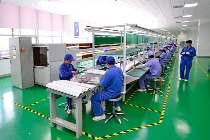With the growing global demand for energy and the urgent need for renewable energy sources, energy harvesting technology has become a topic of great interest in today's science and technology fields. The development of energy harvesting technologies offers new possibilities to solve the energy crisis by capturing and converting energy from the environment to create a sustainable source of energy for society. In this paper, we will explore various innovations in energy harvesting technologies and look at their prospects in the future.

Light Energy Harvesting Technologies
Solar energy, as an endless source of energy, has always been a hot research topic. Photovoltaic (PV) technology, as a representative of light energy harvesting technology, has become a clean and renewable energy solution by converting sunlight into electricity. In recent years, photovoltaic technology has been making breakthroughs, the conversion efficiency of solar cells has been improving, and advances in materials science and nanotechnology have provided new impetus for the development of photovoltaic technology.
In addition, photo-thermal technology, as another light energy harvesting technology, utilizes sunlight to generate heat energy, which can be used in a variety of fields such as heating and power generation. The application of technologies such as concentrating solar reflectors and parabolic mirrors gives photothermal technology a broad application prospect in large-scale energy production.
Second, vibration energy collection technology
Vibration energy harvesting technology utilizes the vibration and vibration existing in the environment and converts them into electric energy. This technology can be applied to urban transportation, mechanical equipment vibration, ocean fluctuations, and other scenes. Using piezoelectric materials or electromagnetic induction principles, vibration energy harvesting technology has a wide range of applications in small electronic devices, sensors, and smart cities. By collecting waste energy, vibration energy harvesting technology provides a new way for the sustainable utilization of energy.
Thermal Energy Harvesting Technology
Thermal energy harvesting technology utilizes thermal differences in the environment and converts them into electrical energy or other forms of energy. Thermoelectric technology is representative of this, where electrical energy is generated through thermoelectric materials at a temperature difference. This technology has a wide range of applications in industrial waste heat utilization, heat dissipation in electronic devices, and so on. With the continuous progress of material science and nanotechnology, the efficiency of thermoelectric technology is constantly improving, which lays the foundation for its promotion in practical applications.
Fourth, wireless energy transfer technology
Wireless energy transfer technology is another important direction in the field of energy harvesting. Using radio waves, lasers, or magnetic fields, energy is transmitted from one location to another, providing the possibility of long-term work for mobile devices, sensors, and drones. This technology not only improves the reliability of devices but also provides a new solution for some devices that cannot use conventional batteries.
Prospects
Continuous innovation in energy harvesting technology provides human society with more sustainable and cleaner energy options. In the future, as the technology continues to evolve, we can expect the following developments:
First, energy harvesting technologies will become more efficient. Advances in materials science, nanotechnology, and engineering technology will improve the efficiency of energy harvesting technologies and make them more competitive in practical applications.
Second, energy harvesting technologies will become smarter. With the booming development of artificial intelligence and Internet of Things technology, the energy harvesting system will be more intelligent, able to adjust the working state in real-time according to the environmental changes and maximize the collection effect of energy.
Finally, energy harvesting technology will be more widely used. From home, and industry to urban infrastructure, energy harvesting technology will play a role in various fields, providing a more sustainable way of life and production for human beings.
Conclusion
Innovations in energy harvesting technologies offer new hope for solving the energy crisis and promoting sustainable development. The continuous development of a wide range of technologies, including light, vibration, thermal, and wireless energy transmission technologies, will propel human society toward a cleaner, smarter, and more sustainable future. On a global scale, strengthening cooperation and promoting scientific research and innovation will be the key to realizing the wide application of energy harvesting technologies in various fields. We have reason to believe that through joint efforts, the energy of the future will be cleaner and more efficient, creating a better life for mankind.

 CN
CN








 Home
Home DFM
DFM  Jan 22,2024
Jan 22,2024 
 Wireless Kinetic Switch Technology: Unleashing the Future of Energy
Wireless Kinetic Switch Technology: Unleashing the Future of Energy 
 Jan 19,2024
Jan 19,2024 












